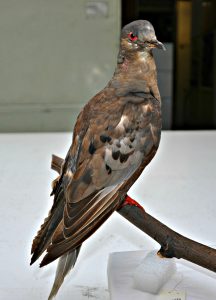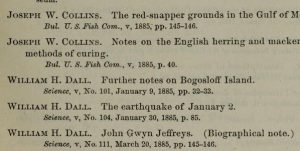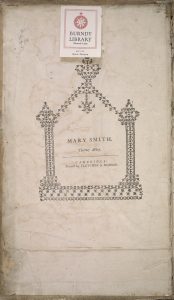
Please join us for this free film showing and lecture!
This event is free and open to the public. If you plan to attend, please RSVP via email to SILRSVP@si.edu.

Please join us for this free film showing and lecture!
This event is free and open to the public. If you plan to attend, please RSVP via email to SILRSVP@si.edu.

This post is written by Helen James, Curator-in-Charge, Division of Birds, National Museum of Natural History. Ask Helen a question during our Twitterchat on Tuesday, September 2nd!
Martha, the last passenger pigeon, is back on public display for the first time since 1999, this time in an exhibition titled Once There Were Billions: Vanished Birds of North America that opened in the Smithsonian Libraries Exhibition Gallery of the National Museum of Natural History on June 24. Martha died on September 1, 1914, in the Cincinnati Zoo; she was immediately frozen into a 300-pound block of ice and shipped by fast train to the Smithsonian in Washington. There her body was carefully preserved as a taxidermy mount and an anatomical specimen. She had been recognized in the last years of her life as the only surviving individual of a species that was the most abundant bird in North America only decades earlier. In death, she has become one of the Smithsonian’s most treasured specimens. Martha’s story was a wake-up call for our nation regarding its unregulated harvesting of natural resources and contributed to the development of our modern conservation ethic and laws protecting wildlife.
Please join the Smithsonian Libraries, the National Museum of Natural History (NMNH) and the Biodiversity Heritage Library (BHL) for a twitterchat on September 2nd. The chat will take place between 2-3 pm (EST) and feature Helen James, Curator of Birds and our recent Once There Were Billions exhibit in NMNH, and Martin Kalfatovic, Program Director of the Biodiversity Heritage Library.
 Thanks to support from the National Museum of Natural History, Smithsonian Research Online (SRO) is adding a large body of legacy publications to its database this year. The source of the data is the annual reports of the United States National Museum (USNM) from the 1870s to the 1960s which often included an appendix listing staff publications. Some years there was no data listed, for example during World War II.
Thanks to support from the National Museum of Natural History, Smithsonian Research Online (SRO) is adding a large body of legacy publications to its database this year. The source of the data is the annual reports of the United States National Museum (USNM) from the 1870s to the 1960s which often included an appendix listing staff publications. Some years there was no data listed, for example during World War II.

Mary Smith’s Commonplace book concerning science and mathematics is a remarkable manuscript for several reasons. 1) It contains a wide breadth of information on the sciences of the mid to late 18th century 2) Mary Smith collected and compiled the information at a time when women were still not widely educated.
The story of the last Passenger Pigeon and the disappearance of the Great Auk, Carolina Parakeet, and Heath Hen reveal the fragile connections between species and their environment. To help tell their story, the Smithsonian Libraries, Biodiversity Heritage Library, and the National Museum of Natural History have curated a joint exhibit entitled Once There Were Billions: Vanished Birds of North America which opened June 24 in the National Museum of Natural History.
Two hundred years ago, the passenger pigeon (Ectopistes migratorius) was the most abundant bird species in North America. A population numbering in the billions, as much as 40% of all land birds on the continent shared the same genome as Martha. Migrating flocks were so large that they literally blocked out the sky, stretching up to a mile wide and 300 miles long and taking 14 hours to pass a single point. Flocks were so densely packed that a single shot could bring down dozens of birds. The beat of up to 3.5 billion pairs of wings literally created its own cold front below, and those unaccustomed to the marvel feared the end of the world was upon them.